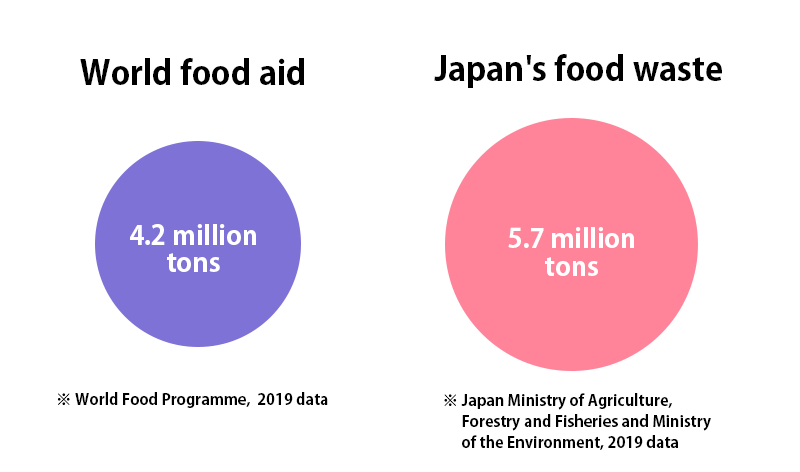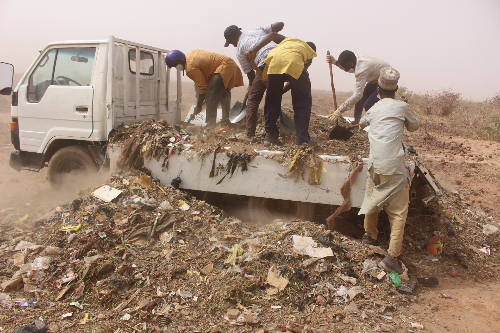J-STORIES - It was humble bread crusts that inspired Yuichiro Yoshikado’s AI-powered farming project.
As the CEO of Corntec, a firm in Kumamoto Prefecture that designs pig and other livestock farms, he was often asked by restaurants if he knew any pig farms that could use waste bread as feed. It got him thinking about how feed could be used efficiently, and as a possible solution to a social problem that afflicts Japan and many other countries.
Japan produces 5.2 million tons of food waste a year. This includes byproducts of food production that are used as livestock feed, such as remainders from making apple juice. If more waste food from homes and restaurants could be put to use in some way, it would greatly reduce the need for imported feed such as corn, or domestic feeds such as specially grown rice.
But waste food from homes and restaurants is around 80% water and soon goes bad, making it difficult to use as feed. To address this problem, Yoshikado’s company is working on a plant in the Kumamoto Prefecture city of Aso that will process the food into stable pig feed using proprietary fermentation technology. The plant is due to open this year.
Next to the plant there will be a farm dealing with a related issue: Japan’s high reliance on imported fertilizer, which was 88% in 2018. The crops there will be nourished with pig manure. Together, the plant and farm aim for a circular local food production system that is kinder on the environment.


The company is also using AI to ensure animal feed is consumed as efficiently as possible. It has developed an AI-powered “PIGI” app that can calculate a pig’s weight only from a photo. In the future, the company wants to develop the system to assess the pig’s shape and growth, and calculate its exact nutritional needs. The feed system could then use that data to vary its waste food “recipe” to create the best, most efficient food for the pigs.
.jpg)
Translation and Editing by Tony McNicol
Top page photo by 5PH / Envato
For inquires about this article, please contact us at jstories@pacificbridge.jp
***
***
Click here for the Japanese version of the article.
.jpg)
![[Tokyo Updates] Is Hill-Farmed Salmon Here to Save Us?](https://storage.googleapis.com/jstories-cms.appspot.com/images/173258722885374_09952-thumb-1600xauto-10881_smallthumbnail.jpeg)
![[Tokyo Updates] Old and Full of Potential: Why a Swedish Model Is Reviving Abandoned Houses in Tokyo](https://storage.googleapis.com/jstories-cms.appspot.com/images/1732603609687d6b0a861ef75d954729578323092323fe00ad55e-thumb-1600xauto-10186_smallthumbnail.jpg)
![[Tokyo Updates] Making Space Development Open for All](https://storage.googleapis.com/jstories-cms.appspot.com/images/1732521298402c3af387cf9df027b91f0e9f2626b300713b93850-thumb-1600xauto-10594_smallthumbnail.jpg)

![[Interview: Part 2] A digital approach to tackle child hunger in Japan with dignity](https://storage.googleapis.com/jstories-cms.appspot.com/images/1766130666509unnamed_bigthumbnail.jpg)
![[Podcast] Japanese technology to supercharge human fertility (Part 2)](https://storage.googleapis.com/jstories-cms.appspot.com/images/1765863548035unnamed-7_bigthumbnail.jpg)
![[Podcast] Japanese technology to supercharge human fertility (Part 1)](https://storage.googleapis.com/jstories-cms.appspot.com/images/1765440905082unnamed_bigthumbnail.jpg)
_bigthumbnail.jpeg)






![[Interview] When digital and physical worlds meet](https://storage.googleapis.com/jstories-cms.appspot.com/images/1747974430456unnamed-2_smallthumbnail.png)




_smallthumbnail.jpeg)

![[Interview: Part 1] From nourishing souls to feeding the hungry](https://storage.googleapis.com/jstories-cms.appspot.com/images/1763695595492unnamed_smallthumbnail.jpg)

